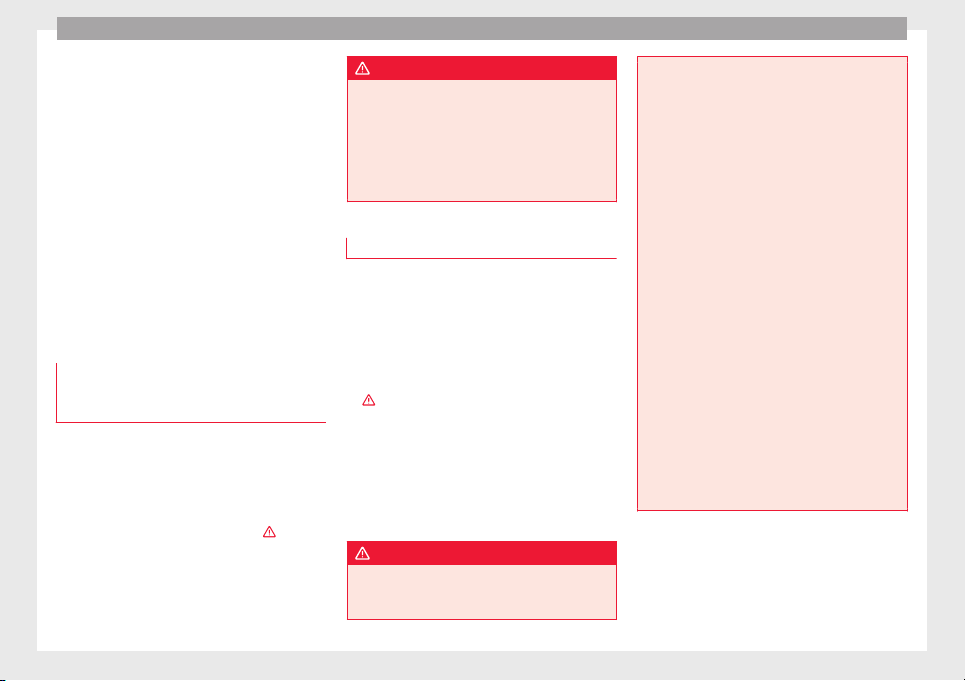Loading ...
Loading ...
Loading ...

Advice
Cleaning storage compartments and drinks
ho
l
der
s
●
Use a clean, damp, lint-free cloth to clean
parts.
●
If this does not provide satisfactory results,
we recommend using a special solvent-free
plastic cleaning product.
Cleaning the ashtray
●
Extract the ashtray and empty it.
●
Clean the ashtray with a dishcloth.
Use a toothpick or similar to remove ash from
the area where cigarettes are stubbed out
››› Fig. 162.
Care and cleaning of plastic parts,
wooden trim and the instrument pan-
el
●
Use a clean, damp, lint-free cloth to clean
p
ar
ts.
●
C
lean plastic parts (inside and outside the
vehicle) and the dash panel with a special
solvent-free product for the care and clean-
ing of plastic, approved by SEAT
›››
.
●
Wash wooden
trims w
ith a mi
ld soap and
water solution.
WARNING
Solvents cause the surfaces of the airbag
module
s to become porous. If an airbag is ac-
cidentally triggered, the detachment of plas-
tic parts could cause serious injury.
●
Never clean the dash panel and the surfa-
ces of the airbag modules with cleaners con-
taining solvents.
Cleaning seatbelts
If the seat belt is very dirty, the belt retractor
m
a
y
not work correctly thus preventing the
seat belt from operating correctly.
The seat belts should never be removed from
the vehicle for cleaning.
●
Use a soft brush to remove the worst dirt
›››
.
●
Pull the seat belt right out and leave it out.
●
Clean dirty seat belts with a gen
tle
so
ap
and water solution.
●
Wait until they are completely dry.
●
Only allow the seat belt to retract when it is
completely dry.
WARNING
Check the condition of all the seat belts at
regu
lar intervals. If the webbing or other
parts of the seat belt are damaged, the vehi-
cle should be taken to a Specialised work-
shop immediately
and the belts should be re-
placed. It is extremely dangerous to drive us-
ing damaged seat belts and could result in
serious injury or loss of life.
●
Seat belts and their components must nev-
er be cleaned with chemical products, nor
should they be allowed to come into contact
with corrosive liquids, solvents or sharp ob-
jects. This could affect the strength of the
seat belt webbing.
●
Seat belts should be completely dry before
retracting. Dampness could damage the belt
retractor so that it does not operate correctly.
●
Do not allow liquids or foreign bodies to en-
ter the buckle fastenings. This could damage
the buckles and seat belts.
●
Never attempt to repair, modify or remove a
seat belt yourself.
●
Always have damaged seatbelts replaced
immediately by seat belts approved for the
vehicle in question by SEAT. Seat belts which
have been worn in an accident and stretched
must be replaced by a specialised workshop.
Renewal may be necessary even if there is no
apparent damage. The belt anchorage should
also be checked.
178
Loading ...
Loading ...
Loading ...